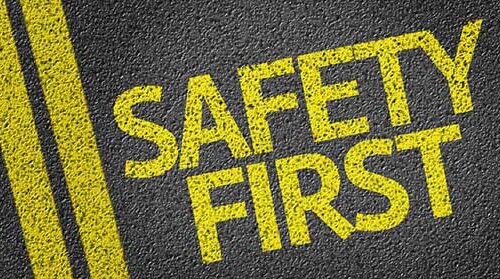Thatcham: Volvo setting safety standard

Thatcham Research has encouraged manufacturers to follow Volvo’s lead when it comes to safety, after the XC60 collected the Safety Award at the What Car? awards last night.
The five-door SUV impressed with the protection it offers to occupants in the event of an accident. Crucially however, it is also fitted with a host of pioneering Advanced Driver Assistance Systems (ADAS) designed to avoid crashes occurring at all.
Key Volvo XC60 safety technologies include: AEB systems which operate at a variety of speeds and driving environments, and can detect pedestrians, cyclists and even large animals; a suite of Lane Support Systems to alert the driver when the car is drifting and actively steer to avoid head-on collisions; Blind Spot Indication Systems; Rear Cross Traffic Alerts; and a Run-Off Road system.
Safety Award judge and director of research at Thatcham Research Matthew Avery said, ‘The Volvo XC60 achieved a very high adult occupant protection score of 98%, in Euro NCAP’s toughest crash tests ever. But it is also bursting at the seams with safety technology to avoid the crash happening at all. It is so far ahead of the game that its innovative Cross Traffic Alert and Turn Across Path systems are not yet a part of the Euro NCAP programme.
‘This car has always broken new ground. In 2008 the original Volvo XC60 was the first to be launched with standard-fit AEB. Back then, it was a relatively basic system which functioned at low speeds, car-to-car. The AEB systems on the new XC60 can handle a full range of different driving speeds and environments and will also detect Vulnerable Road Users and even large animals.’
Two other new vehicles were highly commended by the panel of expert judges – the Volkswagen T-Roc and the Subaru XV.
Matthew continued, ‘The Volkswagen T-Roc is a safety standard-bearer in the ever-growing small SUV segment. Its AEB systems come as standard and performed exceedingly well in Euro NCAP testing. It also comes with Adaptive Cruise Control – a great comfort feature which helps drivers to keep a safe distance from the car in front – and a Lane Keep Assist system to gently steer a drifting car back into lane, both standard-fit. Volkswagen should be commended for the commitment to safety it has shown in 2017 – the Volkswagen Arteon was also in the running for safest car of the year, the Polo is a Euro NCAP best-in-class winner and it became the first van manufacturer to commit to fitting AEB on all new vehicles.’
Matthew continued, ‘The Subaru XV was the other stand-out performer in 2017. It’s got a stereo camera-based AEB system, which is especially good at identifying pedestrians and cyclists, an effective Blind Spot Indication System and a Lane Keep Assist system – again, all fitted as standard to maximise their potential to reduce accident rates. Subaru is a smaller carmaker which has always found a way to prioritise safety, so it’s great to see those efforts commended.’
Today, standard-fitment of AEB on new cars has reached 61%. But, only three of the SMMT’s 10 best-selling cars in 2017 had AEB as standard across all trims, while number one seller the Ford Fiesta only offers this potentially life-saving technology as an option.
‘Achieving a five-star Euro NCAP rating without standard-fit AEB will be close to impossible for vehicle manufacturers from 2018 onwards,’ Matthew said. ‘Many market AEB as an optional extra but with its potential to save so many lives it is far too important not to be fitted as standard. While Killed or Seriously Injured (KSI) accidents affecting occupants are coming down, KSIs involving vulnerable road users such as pedestrians and cyclists are on the increase. Protecting people outside of the car, as well as those inside, is clearly important to our Safety Award finalists.’
In 2018 2.6 million cars have standard-fit AEB, approximately 6.9% of the 38 million cars on the road today.
Matthew said, ‘Standard-fitment of AEB is still not at the levels it should be. Jaguar Land Rover is the only carmaker amongst the top 10 best-selling brands to fit AEB on all new models. While standard-fit AEB penetration for Ford, the top selling brand in the UK, stands at just seven per cent.’
Thatcham Research is also calling upon car buyers to make safety a deal breaker and either only buy cars which have AEB as standard or ask that it be added to the overall purchase price.
Matthew said, ‘Drivers can’t rely on manufacturers to deliver AEB on every new car just yet. Until that day comes car buyers should do their research and follow our top tips for making safety a deal breaker.’








